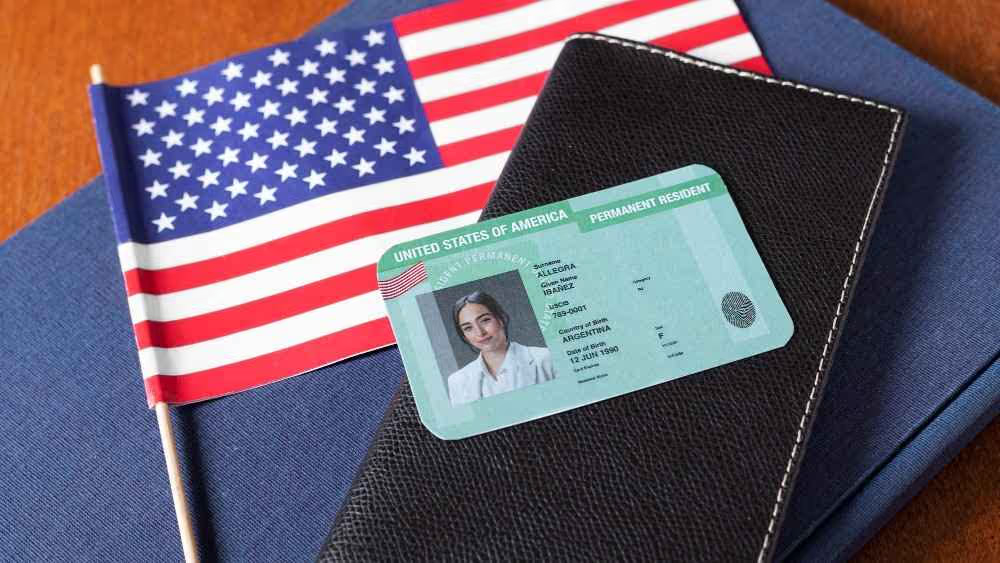.png)
.png)
Learn about O-1 health insurance, compare h1b visa health insurance vs k1 visa health insurance, understand the O-1 visa cost, and how to get the right coverage for you and your family.

Have you ever wondered, “Can an O-1 visa apply for green card?” or “Does an O-1 visa lead to a green card?” This is a typical question for entrepreneurs, researchers, and professionals in the US The short answer: Yes. An O‑1 visa can absolutely lead to a green card. But it doesn’t happen automatically.
The key is knowing where you fit, choosing the right path, and making sure you tell your story clearly and passionately. Let’s break it down together, step by step, so you can move from O-1 to green card with confidence.
If you’re on an O‑1 visa right now, you’ve got some strong options for making the shift to a green card. Here are the big ones:
If you’ve got a strong record — published papers, accolades, media mentions, or innovations — this might be for you. The O-1 visa to green card requirements here focus on showing you’re at the top of your field. The best part? You can self‑petition.
If your work benefits the US — like making advances in research, technology, or education — the EB‑2 NIW route can be ideal. You don’t need an employer sponsor, making it a great fit for entrepreneurs or independent professionals.
So, who issues green cards? It’s the USCIS — the government agency that reviews your petition and ultimately grants your status.
Here’s the most asked question: “O-1 to green card how long?” A rough timeline:
Step 1 — I‑140 Petition: 6–9 months
Step 2 — Adjustment of Status: 8–14 months
Total Time: ~18–30 months
If you’re from India or a country with a long backlog, the timeline can be much longer. In fact, the O-1 visa to green card processing time India can stretch beyond three years for EB-1A, and 5+ years for EB2-NIW due to visa availability.
Pro Tip: Always build in extra time for delays and requests for evidence. Getting started early can save you months or even years down the line.

People often ask, “Where to apply for a green card?” Here’s how it works:
If you’re already in the US: Apply for an Adjustment of Status (using Form I‑485)
If you’re outside the US: Apply for Consular Processing at a US Embassy or Consulate
The process is the same for both — the USCIS will review your petition first (Form I‑140), and then you’ll move to the adjustment or consular review phase.
How long for green card? Around 18–30 months in total, but be sure to review every piece of evidence you send. Small mistakes can cause long delays. Talk to our immigration advisor at Beyond Border to make sure all is in order.
Here’s the biggest decision O‑1 visa holders face: EB1A vs EB2 NIW. Let me make this simple for you:
EB‑1A is ideal if you have a track record that shines. Do you have published papers? Media mentions? High‑impact work? This is your lane.
EB‑2 NIW is generally the best for earlier career professionals. if your work benefits the US in some way — like making advances in clean energy, AI, medicine, or education.
Here’s a quick example. Let’s say you’re an AI engineer making a huge difference in medical diagnostics. An EB‑2 NIW petition might be ideal for you because your work benefits the US. Meanwhile, if you’re an academic with a strong record of published papers and international citations, EB‑1A is worth pursuing and the preferred route given a shorter wait time generally.
Pro Tip: Don’t try to guess which path is right for you. Talk to an expert at Beyond Border. We’ve helped countless O‑1 visa holders move to the green card lane and can help you pick the best route.
Evidence of Your Achievements: List your accomplishments clearly — papers, media mentions, accolades, patents, grants.
Strong Letters of Recommendation: Get endorsements from colleagues and mentors who can vouch for your impact.
Personal Statement: Be honest about why your work matters and how it benefits the US.
Updated Resume/CV: Make sure your experience shines.
A Clear Roadmap: Outline where you’re headed and why you deserve this status.
Documentation preparation is the most important part of your petition journey. Make sure you seek professional opinion on what to include and how to craft your petition to maximize your odds of success.
Here’s the truth — this process doesn’t always go smoothly. Sometimes, USCIS might ask for more evidence (RFE), or delays can happen. This happens in general to 20-30% of applicants, depending on your category.
Remember — every successful O‑1 to green card story started with a first step, and every challenging case found a solution.

If you’re still wondering, “Can an O-1 visa apply for a green card?” The answer is YES — and it doesn’t have to be overwhelming. This is about making a long‑term investment in yourself, your work, and your future.
With the right support, making the shift from O-1 to green card can be a lot smoother. At Beyond Border, we’ve worked with countless entrepreneurs, researchers, and extraordinary talents making this move. We understand the ins and outs of O-1 visa to green card requirements, the nuances of EB1A vs EB2 NIW, and the lengthy delays that come with the O-1 visa to green card processing time India backlog. Speak to our advisor to understand if you can qualify for a better category of Green Card to minimize backlog effects.
If you’re serious about making the shift from O-1 to green card, don’t wait until the last minute. Let Beyond Border help you put your best foot forward. Remember, this isn’t just about a visa. It’s about shaping your future in a place where your talents can thrive. Reach out to Beyond Border and make your O‑1 to green card journey a successful one.